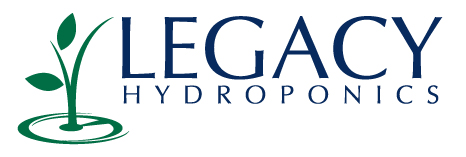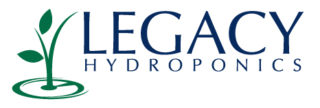Plant Basics
Plants need four basic inputs in order to grow and thrive:
- Light
- Air (more specifically, the carbon dioxide present in the air)
- Water
- Nutrients
These inputs are naturally supplied in an outdoor environment by the sun (light), the soil (nutrients), the air (CO2), and rain (water). Nature supplies these inputs in a natural and relatively random way. Sometimes it works out well for the plant and sometimes it does not. The seed may not land and germinate in fertile soil. The rainfall may be sparse or may be heavy at the wrong time for the plant. There may be too many cloudy days for proper vegetative growth. Then there are the other external factors: The young seedling may be eaten by a hungry herbivore (rabbit, deer, etc). It may get overtaken by insects, or crowded out by weeds. These are just some of the hazards faced by flora (plants) in a natural outdoor environment.
The notion behind the Hydrocart™ is to provide an environment that seeks to eliminate the hazards of the outdoor environment, while at the same time maximizing the genetic potential of a given plant or seed. We do this by providing all of the necessary inputs (L.A.W.N) in optimal amounts at the right times. Since we control our indoor environment, all it takes is for us to understand what the plant wants and deliver it in the right amounts and at the right times. This may sound challenging, but in fact it’s fairly simple. Let’s break it down.
- LIGHT: Plants need light to grow. Many seeds need light in order to germinate. The amount of light that a plant gets (both in terms of intensity and duration) determines, in conjunction with the other three inputs, how well the plant will grow AND when it will bloom or flower. Generally speaking, plants will grow vegetatively when exposed to sufficient lighting for 12 to 24 hours per day. A light cycle greater than 12 hours promotes vegetative growth. A light cycle less than 12 hours, in general, promotes flowering/blooming. The duration of the light cycle is called the photoperiod. In the Hydrocart™, the photoperiod is controlled by the light timer, which in turn is set by you. Thus, you control the photoperiod for the plants growing in it. By setting the timer for greater than 12 hours of light, you are promoting vegetative growth and suppressing blooming/flowering. The longer the light is on, the faster the plants will grow. (I.e. 20 hours of continuous light will promote faster growth than 14 hours of continuous light.) When you set the timer for less than 12 hours of light, you are promoting blooming/flowering. With the shortened light cycle, you are simulating the change of seasons as the days get shorter and the nights longer. This signals to the plant that it is time to bloom/flower.(NOTE: Some plants are Absolute Photoperiod Determinate (APD), while others are Relative Photoperiod Determinate (RPD). RPD plants are triggered to bloom by a combination of chronological age (how old they are) and light cycle (photoperiod). This means that they will begin to bloom at a certain age whether or not they have less than 12 hours of exposure to light. APD plants will NOT bloom/flower until the photoperiod falls below 12 hours (consistently) no matter how old they are.)
- AIR: Plants need air for healthy and vigorous growth and flowering. More specifically, plants need the carbon dioxide that is naturally present in the air in order to grow. Generally speaking, there is plenty of CO2 present in the air, both outdoors and indoors, for healthy plant growth. There may, in many instances be more CO2 present indoors than outdoors, due to the presence of people and pets in the indoor environment. There are ways to supplement the indoor environment with CO2 in order to encourage more rapid and vigorous growth, but for general horticultural purposes is not necessary. In terms of the Hydrocart™ however, the advantage of having one in your home or facility comes from the plants themselves. Plants take in our exhaled air (CO2) and in turn provide us oxygen, which we need to grow and thrive. What the Hydrocart™ provides in abundance that cannot be provided in soil is air to the root zone. This is one of the factors that give the Hydrocart™ a big advantage over other systems and methods in promoting greatly accelerated growth and vigor.
- WATER: The amount of water a plant receives during the growing season in an outdoor environment is determined largely by the amount of rain that happens to fall, unless there is human intervention (irrigation). During periods of drought a plant will lose vigor (and subsequently become susceptible to insects or disease) and perhaps even die. The Hydrocart™ provides water to the plants continuously via the high volume water/nutrient delivery system (a 950 gallon/hour pump and 42 fine spray Aeroponic nozzles). Your plants never want for water, nutrients, or air. The result is maximum lush green growth and plant vigor.
- NUTRIENTS: The amounts of nutrients that are made available to a plant in an outdoor environment depend on the richness and fertility of the soil in which it happens to germinate and grow. If planted intentionally by a human, we can have a hand in determining the fertility (nutrient content) of the soil either by tilling and amending the soil in which we intend to sow our seeds or by fertilizing the soil/plant at various intervals throughout the growing season. The trouble with this is that we sometimes over-fertilize, killing or stunting the plant. Sometimes we forget and don’t fertilize enough, causing the plant not to reach its potential. In any case, most of the fertilizer is wasted from the fertilizer solution as it leaches through the soil and away from the plant. With the Hydrocart™, nutrient components are supplied in a very precise amount and mix. They are made available to the plant constantly, just as the water is. It is this precision that allows us to change our nutrient mix to accommodate the various stages of a plants growth. No fertilizer is wasted, as the nutrients that are unused are recycled back into the reservoir for later use. Seeds and fresh cuttings (clones) require little to no fertilizer. Plants in vegetative growth require more fertilizer (particularly Nitrogen). Blooming plants generally require less nitrogen and more Phosphorous for increased bloom and, in some instances, color. The good news is that, in a hydroponic environment, there is a general mix that works for all stages of a plants growth. However, if you have planted your entire Hydrocart™ at the same time, you can really “push the envelope” on the growth rates and vigor of your indoor dirtless garden by mixing your nutrients to accommodate a specific stage of your garden’s growth. This is the science behind gardening in the Hydrocart™. Besides, it is fun to experiment with different nutrients and enhancers to find the recipe that really maximizes the genetic potential of your plants, herbs, and vegetables.

